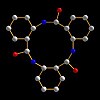
An ideal solution for accurately and rapidly monitoring red, red wine during the fermentation process without the need for direct sampling for chemical analysis has been developed by Australian researchers led by Daniel Cozzolino of the Australian Wine Research Institute, in Adelaide.
The team recognised the need of the modern wine industry for tools that can assist in process control and quality assessment during fermentation and bottling but that can be carried out without complex sampling, preparation by an external lab. they have used chemometrics and Visible-near infrared spectroscopy to monitor concentrations of sugars and phenolic compounds, in red wine and so offer the industry a new approach to quality control.
Uncork vintage news here.


